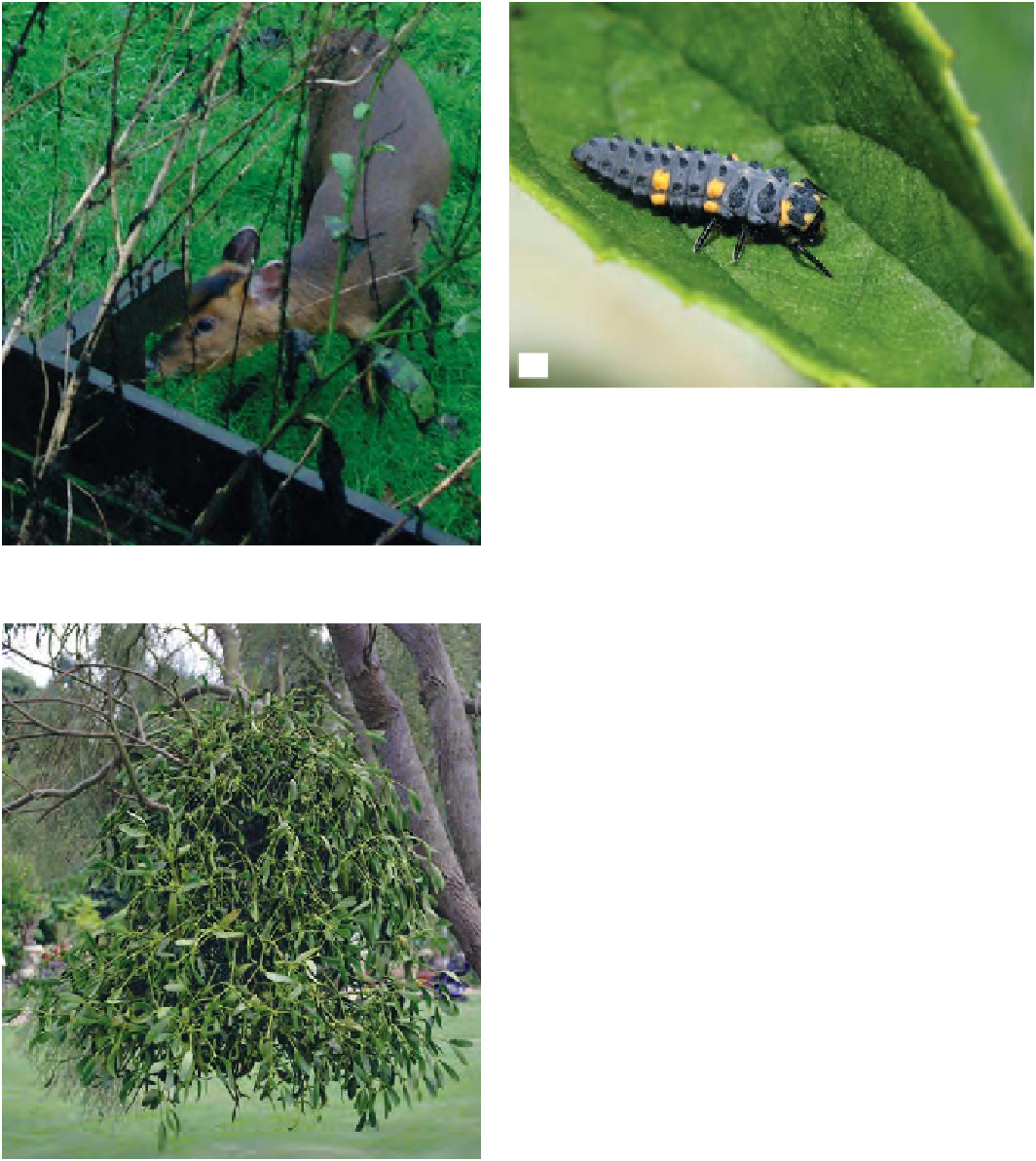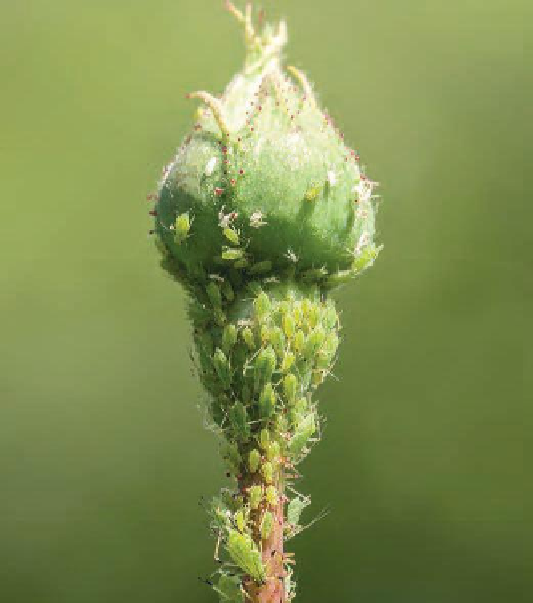Agriculture Reference
In-Depth Information
3
(a)
Figure 3.13
Muntjac deer - a large herbivore
(b)
Figure 3.15
(a) Larvae of the seven-spot ladybird;
(b) rose aphids
(Figure 3.15). Understanding predator-prey cycles
is important in the use of biological control of plant
pests (see Chapters 16 and 18). If broad-spectrum
pesticides are used which kill all insects, they can
interfere with these natural cycles causing disastrous
results. For example, ladybird numbers might be
reduced to such a low level they cannot recover as
quickly as the aphids, so the latter grow to even
greater numbers than before. In this way, the use of
chemical pesticides frequently causes minor pests to
become serious problems by disturbing the natural
controls that keep them in check.
Figure 3.14
Viscum album
(mistletoe) - a
hemiparasitic plant
in pockets in the garden and survive to reproduce.
Once the predator population decreases, the prey
population can expand causing the the cycle to
start again. In a garden, for example, beneficial
insects such as ladybirds (predators) control the
numbers of harmful insects such as aphids (the prey)



